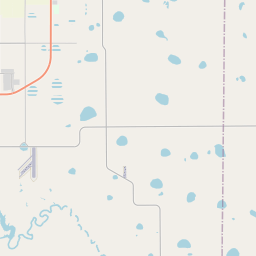Park Named for William A. Carroll, M.D.
Historical marker location:






(April 13, 1875-April 22, 1960) Born in Chester County, Tenn., son of Joseph Cyrus and Emily Kirk Carroll. Married Claudia Haltom, 1900. Graduated 1901 from University of Tennessee. Moved to Claude, 1914. In career of 54 years, delivered over 2500 babies. A staunch Democrat; a Mason and a Shriner; charter member, Claude Lions Club; director, First State Bank of Claude; president, Potter County Medical Association, he was honored, 1950, when city of Claude named this park for him. Dr. and Mrs. Carroll had four children: Kirk, Ralph, Perry, and Roberta. The son Ralph became a physician in Amarillo. (1973)
As one of the most visible programs of the Texas Historical Commission (THC), historical markers commemorate diverse topics in Texas history, including: the history and architecture of houses, commercial and public buildings, religious congregations, and military sites; events that changed the course of local and state history; and individuals who have made lasting contributions to the state, community organizations, and businesses.
Texas has been a major oil-producing state for over a century. The first big oil discovery in Texas was the Spindletop field near Beaumont in 1901, which set off a massive oil boom that transformed the state's economy and made Texas one of the wealthiest states in the country.
The county was officially established in 1876 and named after one of the area's first settlers, Captain James P. Armstrong. During this time, ranching became the primary industry in the region, and cattle ranches flourished. The famous XIT Ranch, one of the largest cattle ranches in the world, spanned multiple counties, including Armstrong County.
In the late 1800s, the arrival of the Fort Worth and Denver City Railroad sparked growth and development in the county. Towns like Claude and Goodnight were established as railroad stations, attracting settlers and businesses. Agriculture also became significant, with crops such as wheat and corn being cultivated alongside the ranching industry.
The county experienced its fair share of challenges as well. Droughts and severe weather conditions often tested the resilience of the farmers and ranchers. Additionally, the arrival of the Dust Bowl in the 1930s devastated the agricultural industry and forced many families to leave the area in search of better opportunities.
Today, Armstrong County continues to embrace its agricultural roots while embracing modern advancements. The county's economy remains largely dependent on ranching and farming, with an increasing focus on sustainable practices. The historic landmarks, such as Charles Goodnight's Park and the Armstrong County Museum, offer glimpses into the area's past, ensuring that its rich history is preserved for future generations.
Armstrong County Timeline
This timeline provides a concise overview of the key events in the history of Armstrong County, Texas.
- 1876: Armstrong County is officially founded, named in honor of Martin Armstrong, a Texas Ranger and early settler in the area.
- Late 1800s: Ranching becomes the primary industry in Armstrong County, with cattle drives and open-range grazing becoming central to the local economy.
- 1890: The county seat is established in Claude, which quickly becomes a bustling town serving the surrounding rural community.
- Early 1900s: The discovery of oil in the Panhandle region sparks an economic boom in Armstrong County, leading to an increase in population and infrastructure development.
- 1921: The Armstrong County Courthouse is constructed in Claude as a symbol of the county's growth and prosperity.
- 1930s: The Great Depression hits the county hard, causing widespread economic hardship, but agriculture and oil production help sustain the community.
- 1940s-1950s: Armstrong County experiences a decline in population as people migrate to urban areas for job opportunities.
- 1970s: The county begins to focus on attracting tourism, particularly by promoting its scenic landscape and historic attractions such as Charles Goodnight's ranch.
- 1998: The Armstrong County Museum is established to preserve and showcase the history and heritage of the area.
- 2000s: Armstrong County continues to thrive as an agricultural community, with cattle ranching and farming being major economic activities. The county also benefits from oil and natural gas production.